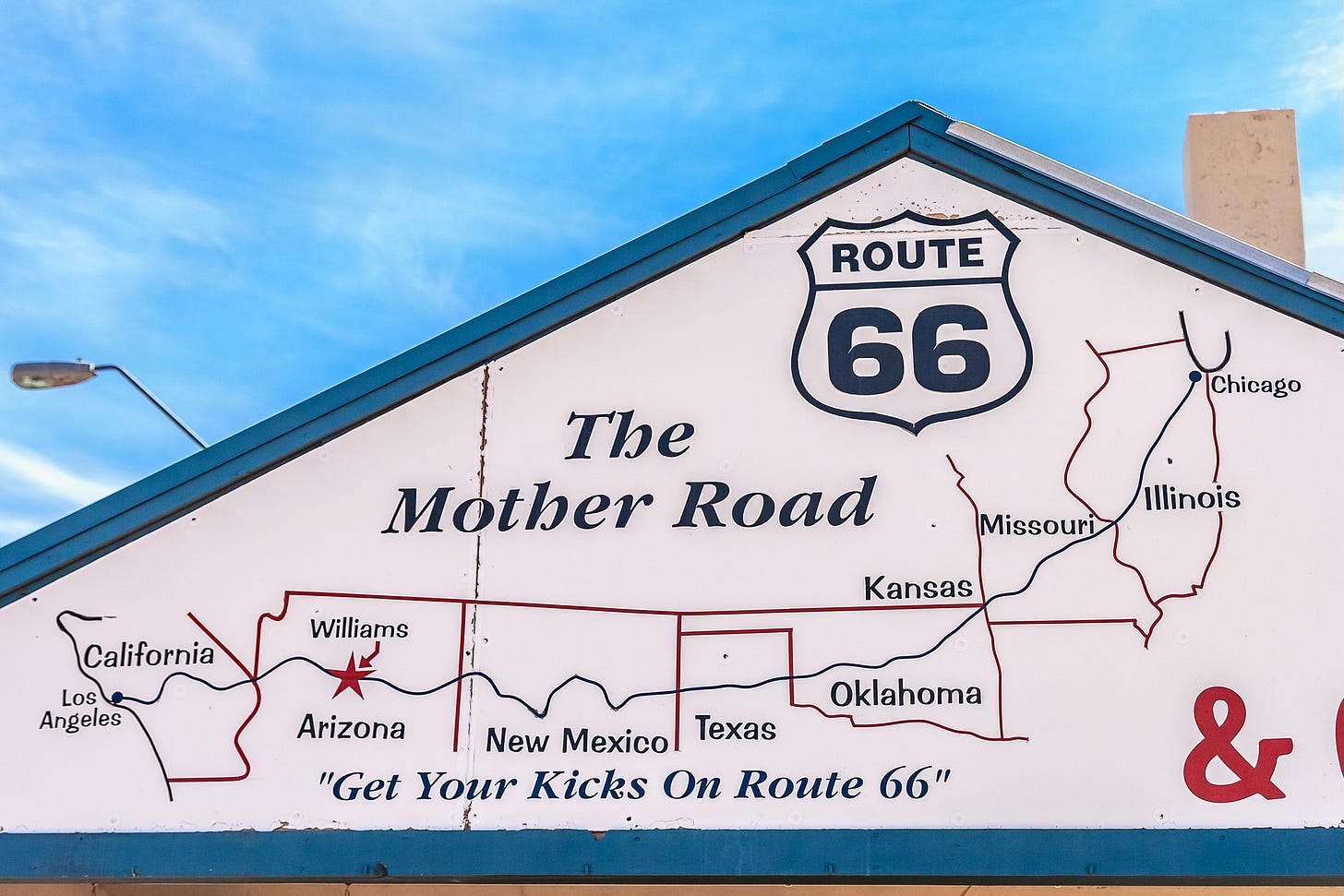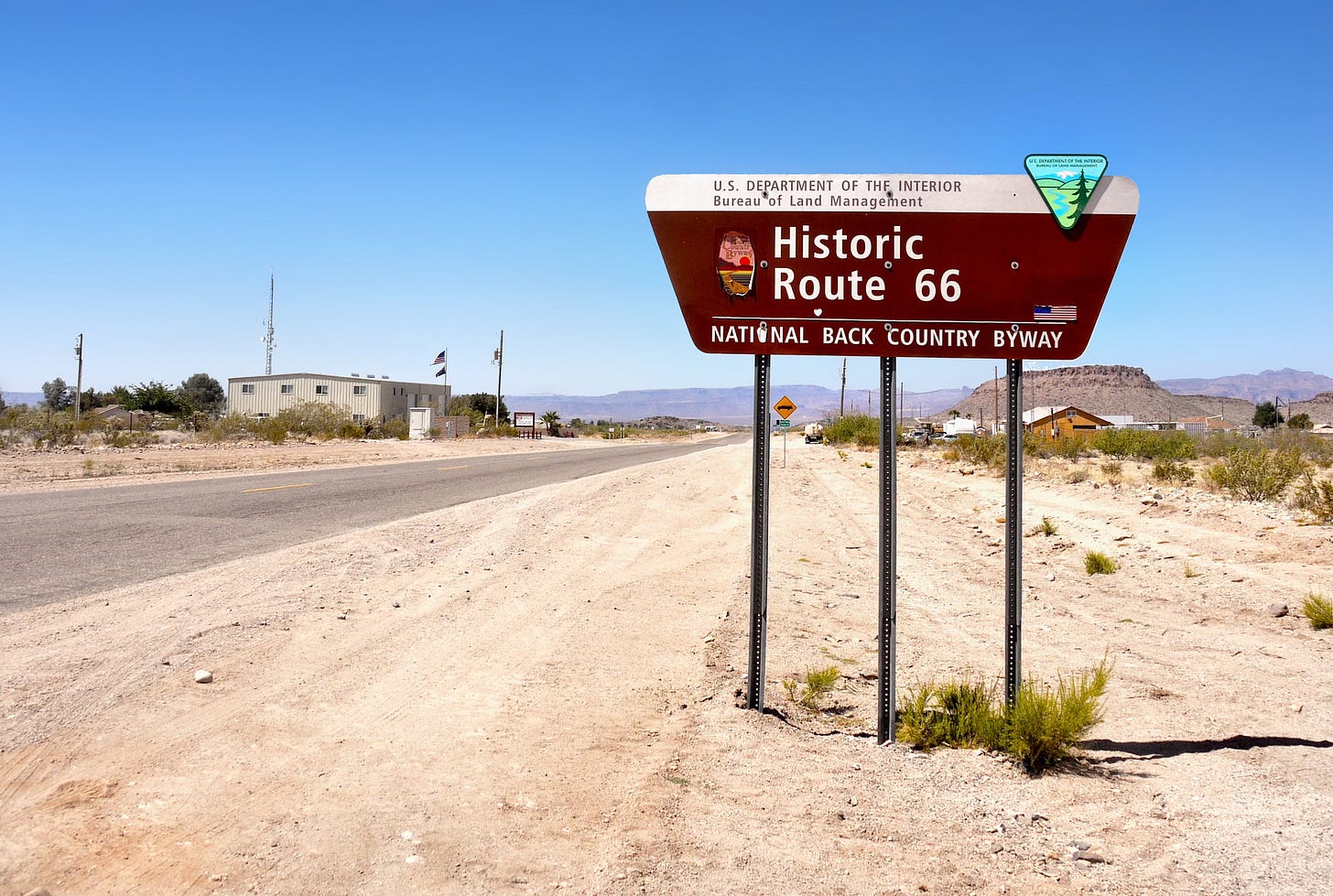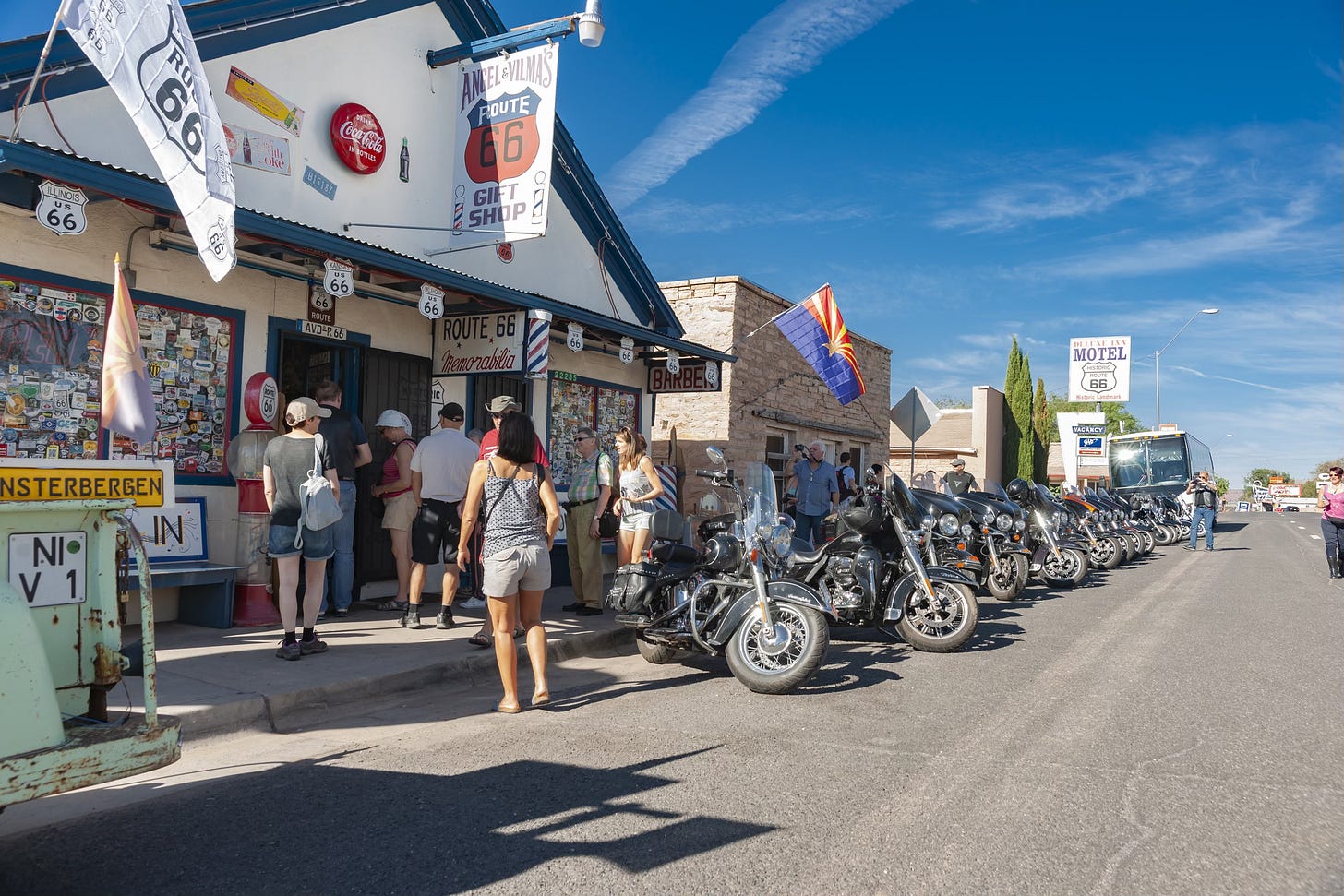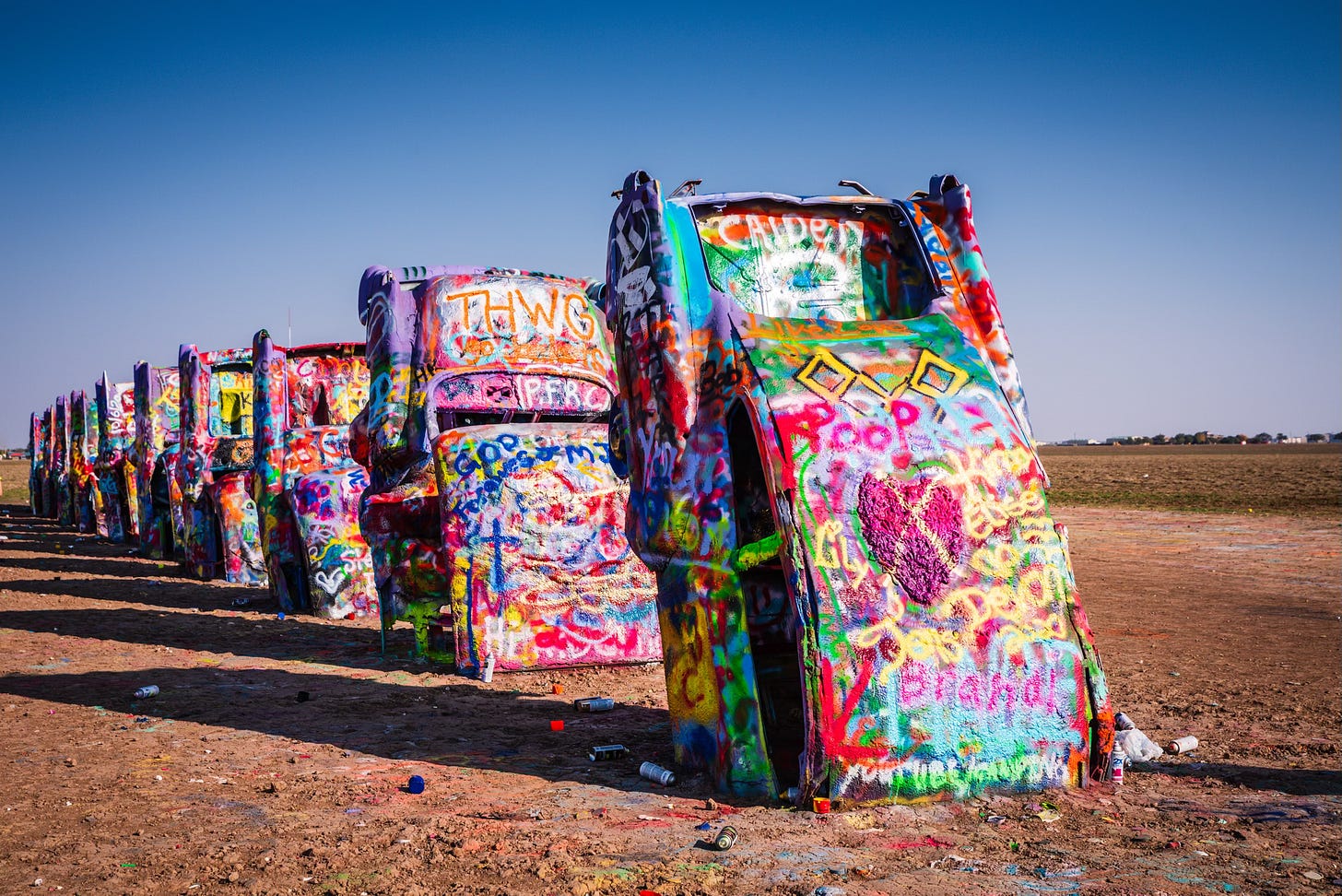Taking Route 66 -- An American Highway
U.S. Route 66 was one of the original roads in the Unites States. It ran from Chicago to Santa Monica, California.
During the decade-long Depression that began in 1929, traffic along the thoroughfare helped to support restaurants, motels and other mom-and-pop businesses that catered to passing motorists. By 1938, it became the first highway in the country to be completely paved.
Adding to the fame of this historic roadway was its starring role in the popular 1960s television series named for it. The show followed two young men who were traveling in a classic Chevrolet Corvette.
Complementing that publicity was a chapter in John Steinbeck’s 1939 Pulitzer Prize-winning novel Grapes of Wrath. It has a chapter about Dust Bowl migrants traveling on the highway, which he nicknamed “The Mother Road.”
Following Route 66 is like a trip back in time
People following the path of Route 66 today find themselves immersed in tangible memories of its past. More than 250 buildings, bridges and other sites are listed on the National Register of Historic Places. Each state along the way has its claims to fame.
The Cyrus Avery Centennial Plaza in Tulsa, Oklahoma is located at the end of the 11th Street bridge over which the route passed. A massive sculpture there, which is named “East Meets West,” depicts members of a family traveling in a Model T Ford meeting a horse-drawn carriage heading in the opposite direction.
In New Mexico, about 265 miles of historic Route 66 are drivable. The highway enters the state across a vast prairie, then meanders through rocky outcrops and past adobe villages with churches that predate the road by about a century.
Driving along the original Route 66
One of the few drivable stretches of the original road runs through Amarillo, Texas. About an hour drive further on, the aptly Midpoint Café, which is two years younger than the highway, greets visitors with its slogan: “When you’re here, you’re halfway there.”
Another Amarillo landmark along Route 66 is a group of 10 Cadillac cars buried front-first in the ground. The cars, tilted at an angle, are covered with multicolored graffiti that has been applied over the years.
In Springfield, Illinois, portions of the road near Carpenter Park and Lake Springfield, and a 1.25 mile stretch of brick nearby, are listed on the National Register of Historic Places. Motorists may check out the Cozy Dog Drive In, Route 66 Drive In Theater, Mahan’s Filling Station and the Sonrise Donuts Sign at Route 66 Motorheads & Ace Sign Company Museum.
This store predated Route 66 by a year
The Eisler Brothers Old Riverton Store in Kansas opened in 1925 along what, a year later, would become – you guessed it -- Route 66. Along with groceries and produce, it offers a display of Route 66 memorabilia.
Communities across Oklahoma are marking the milestone birthday by installing Centennial Monuments along the historic highway. These 16-foot-tall structures feature a glowing, double-sided Route 66 shield, the two-letter abbreviation for the state and the centennial years: 1926–2026. A display box on the pole identifies the specific location -- whether a city, town or attraction -- and includes a QR code linking to local stories, history, and visitor information.
Museums with mementoes of Route 66
Other mementoes of The Mother Road await discovery at museums around the country. Collections focused on the route are housed in Clinton, Sapulpa and Elk City, Oklahoma. The Route 66 Hall of Fame & Museum in Pontiac, Illinois is the repository of thousands of relics pieces from the glory days of the byway.
The National Museum of American History in Washington, DC has an impressive collection of artifacts and photographs related to the highway. They include a restored car and truck similar to those that were on the thoroughfare in the 1930s, neon signs which were displayed at roadside businesses, and a portion of pavement rescued from Bridgeport, Oklahoma.
A road pavement sample and scenic sculptures, neon signs along with sites listed on the National Register of Historic Places serve as reminders of The Mother Road. Its one century birthday will be a perfect time to celebrate what in its time was an engineering marvel, and continues to hold an important place in the annals of the development and growth of the United States.
Victor Block retains the travel bug after gallivanting throughout the United States and to more than 75 other countries worldwide and writing about what he sees, does, and learns. He believes travel is the best possible education and claims he still has much to learn. He loves to explore new destinations and cultures, and his stories about them have won many writing awards.









Thanks Victor, great overview. Our compny has been taking tour groups on the old road since 1998 and we can't wait for next year. Evrey little town is doing something to spruce itself up for the anticipated crowds. For anyone who has never traveled The Main Street of America, this is the ultimate road trip. See you on The Mother Road next year!